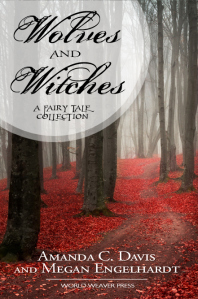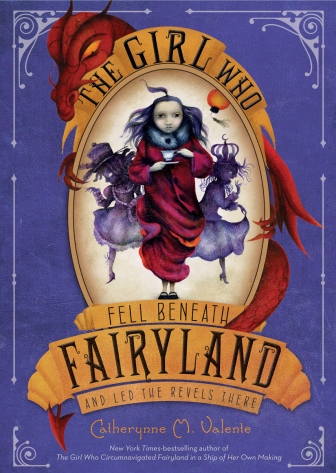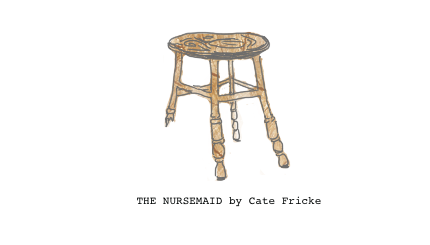Form and Fairy Tale: the visual appeal of La Belle et la Bête
July 31, 2016 § Leave a comment
Christophe Gans’ extravagant French film adaptation of “Beauty and the Beast” will be shown in select cities this September, and from the looks of the trailer, it’s right in line with the CGI live-action extravaganzas we’ve been treated to by Hollywood in the last handful of years.
Praised and awarded in Europe for its luscious production design, La Belle et la Bête is hardly the kind of film you could describe as “restrained.” But restraint isn’t really what the film industry has in mind for fairy tales lately; I’m immediately thinking of the bombastic giant-human battles in 2013’s Jack the Giant Slayer and Maleficent’s sparkly, fairy-populated Moors in 2014. It’s worth noting that La Belle et la Bête was also originally released in 2014, followed in 2015 by the much more understated (and more disturbing) Tale of Tales, directed by Matteo Garrone. (Warning: trailer below is NSFW) « Read the rest of this entry »
Beyond the Woods: a new anthology
July 8, 2016 § 1 Comment
 This week a new anthology of fairy tales for grown-ups hit the shelves. Beyond the Woods, compiled by Stoker- and World Fantasy Award-winning editor Paula Guran, is 500+ pages of fairy tale retellings from the past three decades, from writers such as Jeff VanderMeer, Kelly Link, Neil Gaiman, Holly Black, Theodora Goss, and Tanith Lee.
This week a new anthology of fairy tales for grown-ups hit the shelves. Beyond the Woods, compiled by Stoker- and World Fantasy Award-winning editor Paula Guran, is 500+ pages of fairy tale retellings from the past three decades, from writers such as Jeff VanderMeer, Kelly Link, Neil Gaiman, Holly Black, Theodora Goss, and Tanith Lee.
In her introduction to the hefty volume, Guran takes pains to inform the reader that fairy tale retellings for adult readers are thriving. I’m not sure that her insistence is really necessary, since it seems we’re living in an undeniable second age for fairy tales of all types. Nonetheless, it’s always nice to have such a substantial reminder. What Beyond the Woods brings to the conversation is a primer in the contemporary fairy tale fiction that’s happening just left of the high literary sphere. « Read the rest of this entry »
Film Preview: Le Petit Prince
December 14, 2014 § Leave a comment
Normally one to rail against major revisions/additions to film adaptations of classic literature, I am completely charmed by this trailer for the new French animated film version of Antoine de Saint Exupery’s The Little Prince, and its added narrative of this little girl and her friendship with her oddball neighbor. If you’ve read the book, then you know that the narrator, the pilot, is addressing an unseen listener, and it’s conceivable that that listener might well look like the studious little girl given life in this new film. And by adding this framework, it seems to me that the filmmakers have captured the wonder of reading this book, either for the first time as a child, or as an adult lost in the pleasures of nostalgia. The shift in animation style between the “real” world and the story of the Little Prince is so lovely, portraying the story-within-a-story as something delicate and other-worldly. I can’t wait to see this!
“Tin Girl” in Fairy Tale Review’s Emerald Issue
February 19, 2014 § Leave a comment
Fairy Tale Review‘s 10th Anniversary Issue, The Emerald Issue, is now available! The issue is comprised of nearly 200 pages of short fiction, poetry, and essays inspired by The Wizard of Oz, and a short story of mine, “Tin Girl” is included. I took this picture this afternoon when my copies of the journal came in the mail, because the story was inspired not only by The Wizard of Oz, but by the lives and demeanors of my two grandmothers, and the strange piece of machinery that is the human heart. If you’re a lover of fairy tales, or just great literary writing with a touch of the speculative, you should definitely check out Fairy Tale Review. And check out my interview with founder and editor and fairy tale author Kate Bernheimer here on the Train as well!
The Girl Who Soared Over Fairyland on The Slate Book Review
October 11, 2013 § Leave a comment
My first review with Slate is up today, on the latest in Catherynne M. Valente’s Fairyland series, The Girl Who Soared Over Fairyland and Cut the Moon in Two. Here’s an excerpt:
 The emotional crunch of book three, The Girl Who Soared Over Fairyland and Cut the Moon in Two, is September’s worry that her Persephone visa, which allows her to return each spring to Fairyland, will soon be null and void. Valente’s imagination for whimsical locales in this series reaches a pinnacle with this book, as we follow September to a highway in the stars, a moon-city that grows along the swirling insides of a giant shell, and a lightning jungle that crackles with electricity. But the Fairyland books are not about Fairyland itself—its wonderful locations are merely colorful backdrops for September’s transformation from a Somewhat Heartless 12-year-old into a complex 14-year-old. And despite the presence of beloved characters from earlier novels, The Girl Who Soared is an adolescent’s tale, full of raw emotion, unabashed wonder, and touching uncertainty.
The emotional crunch of book three, The Girl Who Soared Over Fairyland and Cut the Moon in Two, is September’s worry that her Persephone visa, which allows her to return each spring to Fairyland, will soon be null and void. Valente’s imagination for whimsical locales in this series reaches a pinnacle with this book, as we follow September to a highway in the stars, a moon-city that grows along the swirling insides of a giant shell, and a lightning jungle that crackles with electricity. But the Fairyland books are not about Fairyland itself—its wonderful locations are merely colorful backdrops for September’s transformation from a Somewhat Heartless 12-year-old into a complex 14-year-old. And despite the presence of beloved characters from earlier novels, The Girl Who Soared is an adolescent’s tale, full of raw emotion, unabashed wonder, and touching uncertainty.
Read the rest here.
I’m terrible at being coy: I’ll go ahead and admit that having an article on Slate is a big deal for me. Two years ago, when I left school and moved to Poughkeepsie, I started this blog in my off hours working at a restaurant, hoping that eventually it would lead to something good. It’s led to a ton of good, and the book that first inspired me to start blogging was Valente’s Deathless, a dark, adult take on Russian folklore. So publishing a review in a mag like Slate, about another of Valente’s books, seems satisfyingly full-circle for me. I’m very grateful for the chance, and I hope it leads to even more good stuff in the future. Thanks for reading!
Fairy Tales Behind the Curtain: A Conversation with Kate Wolford and Megan Engelhardt
May 9, 2013 § 6 Comments
Kate Wolford is a teacher, scholar, and author/editor of Beyond the Glass Slipper: Ten Neglected Fairy Tales to Fall in Love With, now out from World Weaver Press. She also edits the online magazine Enchanted Conversation. Megan Engelhardt is the co-author of Wolves and Witches, a collection of prose and poetry fairy tale adaptations by herself and her sister, Amanda C. Davis. Wolves and Witches is also available from World Weaver Press.
 Both Kate and Megan agreed to chat with me about fairy tales and their complicated relationship with gender, and what draws writers and scholars to them still. Enjoy!
Both Kate and Megan agreed to chat with me about fairy tales and their complicated relationship with gender, and what draws writers and scholars to them still. Enjoy!
crfricke: Both the act of collecting little known fairy tales and re-writing fairy tales are akin to drawing back a curtain on something—would you say that that was part of your mission in writing these books? If so, how would you define what is being revealed?
Kate Wolford: Yes, is my answer to the first question. Of the ten tales in Beyond the Glass Slipper, only “The Nixy” and “King Pig” are even moderately well known—especially when it comes to US readers. The massive domination of Disney fairy tale culture in the Americas means that even sophisticated fans of fairy tales might have a fairly narrow view of what a fairy tale is “supposed” to be. For example, people really believe that fairy tales always end in “happily ever after.” They very often don’t. What the book is meant to reveal is a wider idea of what a fairy tale can be, and that the world of fairy tales is richer and more diverse than most of us ever imagine. I also want readers to realize that fairy tale heroes and heroines often are people of questionable character. Look at the soldier in one of the stories, “The Blue Light.” That he will be as bad a king as the man he vanquishes is pretty clear. But, then again, in Andersen’s “The Little Mermaid,” the protagonist is a stalker, but people so seldom notice.
 Megan Engelhardt: For the first question, in our case, a lot of the tales we use are fairly well known. I think for Amanda and me, the fun comes in asking the reader to look at the familiar from a different angle. I’m not sure that it’s fair to call it a mission, really, but it is definitely an interest that directed a lot of the work in Wolves and Witches. We all know what happens from the main character’s point of view, but what’s the villain thinking? What’s going on over here to the side of the main action? What happens after the curtain closes? Those are the questions that fired our imaginations, and those are the stories we tried to reveal to the reader. « Read the rest of this entry »
Megan Engelhardt: For the first question, in our case, a lot of the tales we use are fairly well known. I think for Amanda and me, the fun comes in asking the reader to look at the familiar from a different angle. I’m not sure that it’s fair to call it a mission, really, but it is definitely an interest that directed a lot of the work in Wolves and Witches. We all know what happens from the main character’s point of view, but what’s the villain thinking? What’s going on over here to the side of the main action? What happens after the curtain closes? Those are the questions that fired our imaginations, and those are the stories we tried to reveal to the reader. « Read the rest of this entry »
The Little Prince’s 70th Anniversary
April 7, 2013 § Leave a comment
 Yesterday marked the 70th anniversary of the publication of Antoine de Saint Exupery’s The Little Prince, one of the most recognizable, but also most thematically nuanced and melancholy, children’s books of the 20th Century. Published in 1943, the short novel draws on Exupery’s own experiences as a pilot. In the book, a pilot finds himself stranded, without fuel, in the Sahara desert. He meets the Little Prince, who is on his own adventure, having set off from his tiny home planet to learn more about life, love, and loss.
Yesterday marked the 70th anniversary of the publication of Antoine de Saint Exupery’s The Little Prince, one of the most recognizable, but also most thematically nuanced and melancholy, children’s books of the 20th Century. Published in 1943, the short novel draws on Exupery’s own experiences as a pilot. In the book, a pilot finds himself stranded, without fuel, in the Sahara desert. He meets the Little Prince, who is on his own adventure, having set off from his tiny home planet to learn more about life, love, and loss.
Although ostensibly a children’s book, The Little Prince explores, sometimes cynically, the difference between a child-like perception of the universe and adult relationships, and a more jaded “grown-up” point of view. The Prince learns about human trickery and pettiness as well as love on his journey, and though he does not discover that heartache is a purely “grown-up” emotion, having experienced it on his home planet through his relationship with his rose, he does discover that knowledge of the wider adult world does little to stave it off.
The most memorable quotes from The Little Prince spring from the Prince’s encounter with a Fox, whom he loves and tames, and thus feels an unbreakable connection to. And no one encapsulates the mix of child-like wonder and wise, desperate melancholy more than Gene Wilder as the Fox, in this live-action 1974 film adaptation.
Several special editions are in the works to mark the anniversary by Houghton Mifflin Harcourt. Learn more here.
“The Nursemaid” up @ Lightning Cake
March 6, 2013 § 1 Comment
Just in time for AWP, I have a new story stretching its legs out in the wide world: “The Nursemaid,” a flash fiction piece, is now posted on Lightning Cake! Lightning Cake is a beautiful new online magazine of speculative bites, and not only am I in great company with a handful of other talented writers, but the editor, LiAnn Yim, creates a delicate, unique illustration for each piece. Take a look, and enjoy!
Halloween, the Hollow Queen, Princess of Doing What You Please, and Night’s Best Girl
October 9, 2012 § Leave a comment
…Or so September’s shadow has become, in The Girl Who Fell Beneath Fairyland and Led the Revels There, since being cruelly sliced from September’s side and taken down to Fairyland Below in the first book of the series, The Girl Who Circumnavigated Fairyland in a Ship of Her Own Making.
 Now September has returned to Fairyland to find that her shadow, Halloween, has caused a panic in Fairyland-Above by stealing everyone’s shadows (the source of their magic) to join her in her nightly revels in Fairyland-Below, with the help of the mysterious Alleyman. September must stand up to her impish and impulsive shadow, resist the temptations of constant, unbridled magic-making, and find a way to restore balance to Fairyland.
Now September has returned to Fairyland to find that her shadow, Halloween, has caused a panic in Fairyland-Above by stealing everyone’s shadows (the source of their magic) to join her in her nightly revels in Fairyland-Below, with the help of the mysterious Alleyman. September must stand up to her impish and impulsive shadow, resist the temptations of constant, unbridled magic-making, and find a way to restore balance to Fairyland.
In Fell Beneath Fairyland, September is a slightly older, and more emotionally muddled, heroine—now a budding teenager, September’s heart is a bit more aching, and her instincts are a bit more honed. Her shadow is still the spitting image of the September who saved Fairyland in the last book, missing shoe and all—a couple of years younger, and so much more impulsive. Halloween is very much September’s Id, the child-self that growing September is leaving behind, and it’s this contrast that Fell Beneath Fairyland seeks to explore: what happens to a child heroine once she’s no longer such a child? Does a one-time savior of Fairyland get to enjoy the magical fruits of her labor and let untapped wishes loose, or is a heroine’s work dependent on balance? « Read the rest of this entry »
Review of Kij Johnson’s “At the Mouth of the River of Bees” Published in OSU’s The Journal
August 3, 2012 § 2 Comments
Check out the current issue of The Journal, Ohio State University’s literary magazine, for my review of Kij Johnson’s collection of short stories, At the Mouth of the River of Bees, due out this fall from Small Beer Press.
 Kij Johnson is a World Fantasy and Nebula Award-winning author whose short stories have appeared in magazines such as Asimov’s and Amazing Stories. Here’s an excerpt from the review:
Kij Johnson is a World Fantasy and Nebula Award-winning author whose short stories have appeared in magazines such as Asimov’s and Amazing Stories. Here’s an excerpt from the review:
Whether we debate fantasy fiction and sci-fi as literary (or not) due to audience or due to certain tropes, I can assure you that Kij Johnson’s collection eschews easily fitting itself into our expectations of either category. Well, there is the odd alien. But consider, for example, “The Evolution of Trickster Stories Among the Dogs of North Park After the Change,” a unsettling speculative tale in which household pets have suddenly been granted the gift of speech. Owners, fearing what follows the advent of speech and thus, argument, get rid of their dogs en masse. The story is told from the point of view of Linna, a girl who studies a group of newly-strayed dogs in her local park, and observes their budding folklore, a slew of trickster tales that are as haunting, funny, and both defiant of and compliant with traditional form as any story in the collection itself. “The Evolution of Trickster Tales” defies a neat label—it’s speculative fiction at its unnerving best, as well as an illuminating lens on the tradition of folklore and its power.
You can read the full review in the current issue of The Journal, which can be procured on the subscription page of The Journal‘s newly re-designed website. At the Mouth of the River of Bees will be available on August 14th from Small Beer Press.

